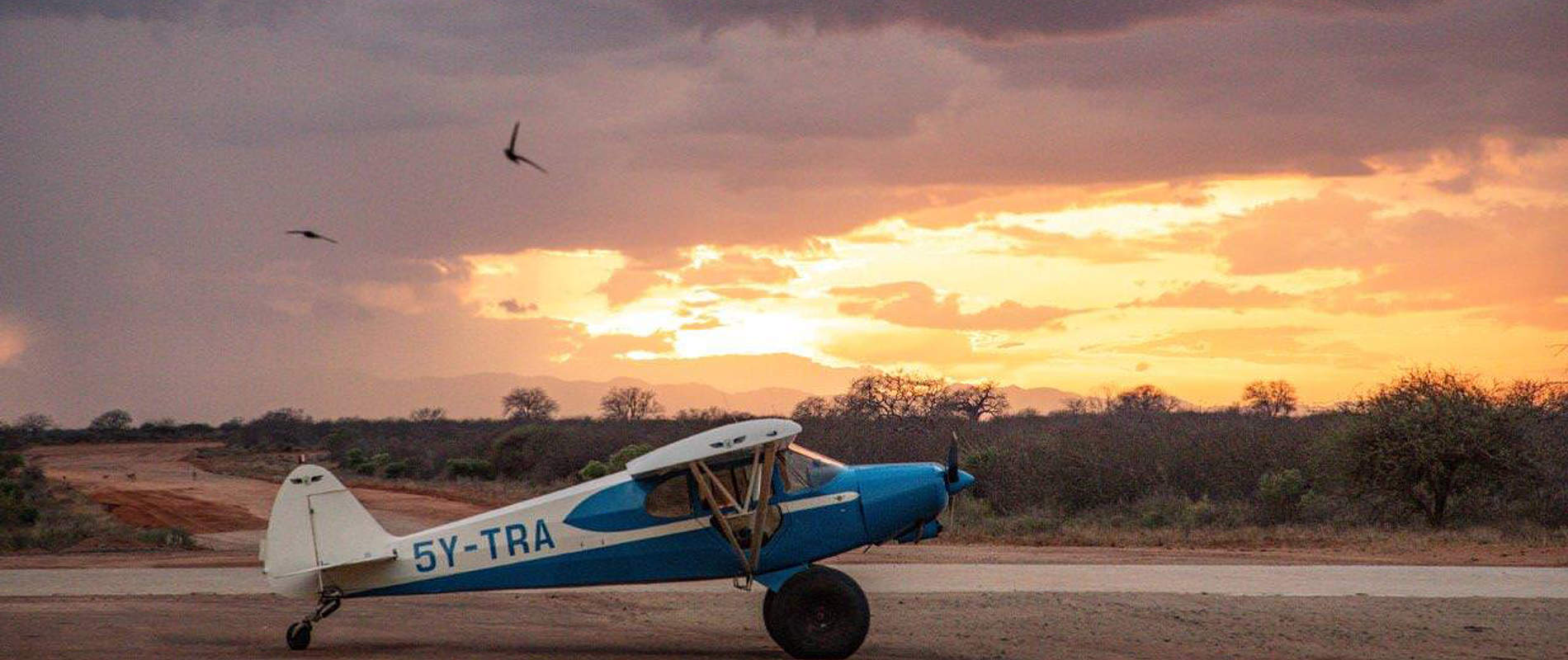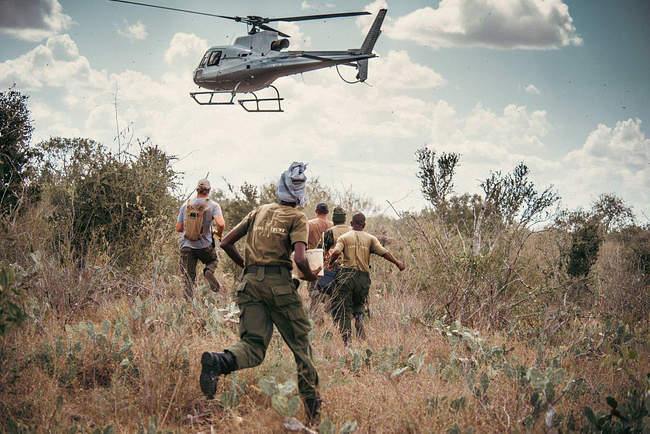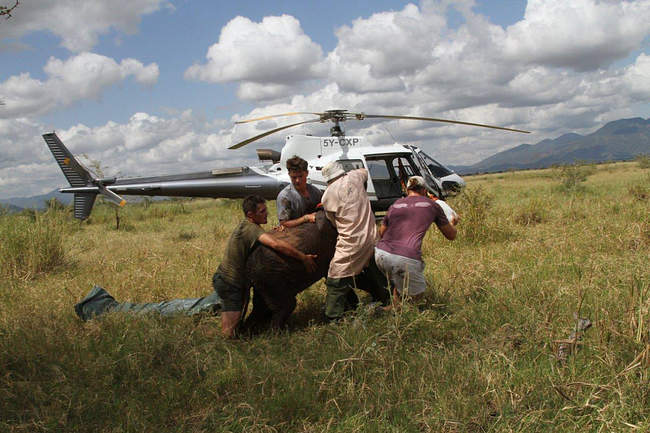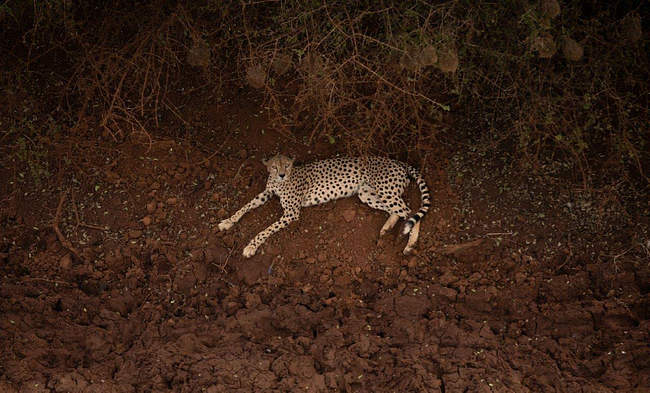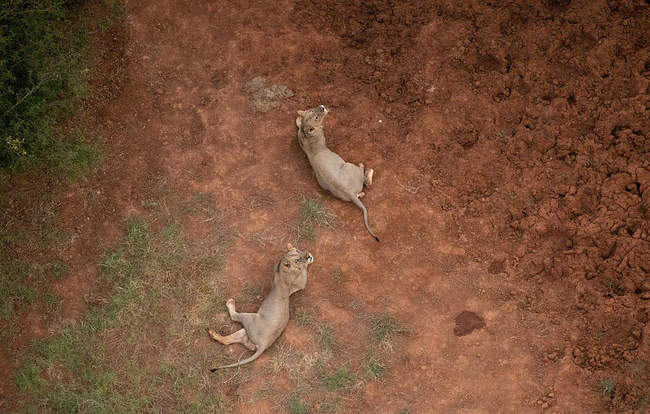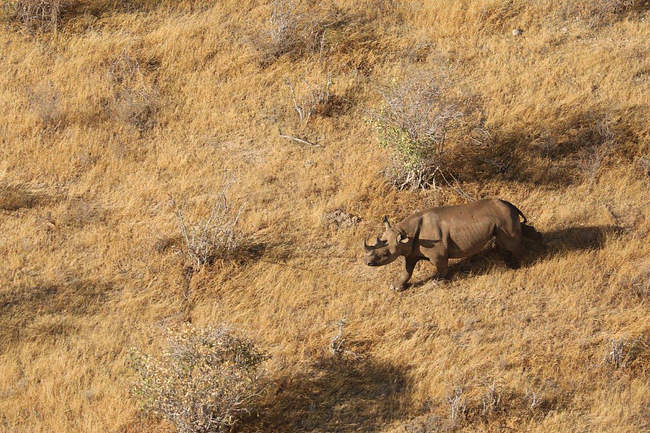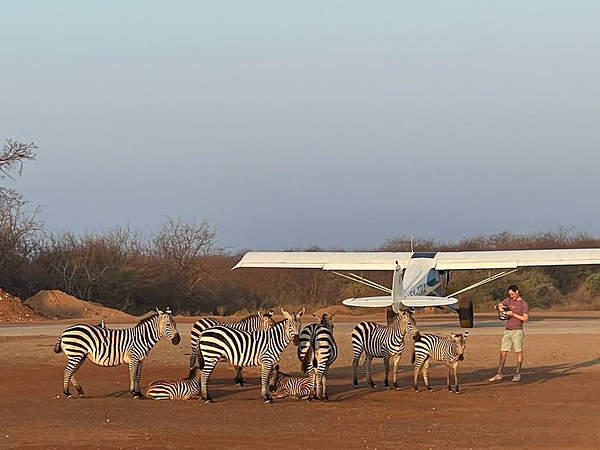With five pilots flying in March, a huge amount of ground was covered, both within and outside of the national parks. Encouragingly, there has been a massive improvement in the status of illegal activity in the park, thanks to persistent efforts by KWS supported by the SWT Aerial Unit to drive herders and livestock out of the protected areas.
Only a few small incursions were recorded in Tsavo East National Park, and these were dealt with swiftly by KWS. In Tsavo West National Park, north of the Maktau-Taveta road, a similar level of non-tolerance has been maintained.
There was a successful arrest of two poachers found with a dead crocodile on the Athi River. The poachers were spotted during a routine helicopter patrol, and both were apprehended after the helicopter landed nearby. Also discovered on aerial patrols was a shooting blind and a poacher's harbour.
Aerial assistance provided to the SWT/KWS Mobile Veterinary Teams included a transfer flight of the Amboseli Vet to Tsavo to assist with the treatment of an injured sub-adult elephant in Tsavo West National Park. A transfer flight in the helicopter was also conducted with the Voi Vet to do an autopsy on a dead, female rhino in the Chyulu Hills National Park. The rhino is thought to have died of natural causes. Finally, a fixed wing aircraft was used to locate a sick, adult, male cheetah on Kulalu Ranch, which was later treated by the vet. Ongoing monitoring will be required.

There was a massive decrease in Human-Elephant Conflict callouts in March, even compared to last year. Only three cases were attended to. While one attempt was unsuccessful, on the other two occasions, elephants were successfully pushed out of farmland and back into Tsavo East National Park. Some other illegal activities discovered in the parks during the month were the following: illegal mining (for gemstones) in Tsavo West, marijuana cultivation in the cloud forest in Chyulu Hills National Park, honey harvesting and one charcoal kiln. Only two elephant carcasses were found by the Aerial Unit in March, and both were very old with tusks intact, and most likely the result of natural deaths.

One orphaned elephant was spotted on a helicopter patrol, standing alone, trying to drink water from a muddy waterhole. At only five months old, the calf was small enough to be airlifted in the helicopter where it was taken for specialized care. Apart from animal rescues, the helicopters are occasionally used for casualty evacuations. This month, the helicopter responded to a callout from KWS who reported that a ranger had been shot in the foot by an accidental discharge of his weapon. The ranger was collected and ferried to hospital to have the wound treated.
Our pilots got to enjoy some amazing scenes in March, with hundreds of elephants and other plains game concentrated along the Galana River and Tiva Rivers in Tsavo East National Park. Predators, as well, were seen in huge numbers. Elsewhere, one of our pilots was treated to three very rare (in Kenya) sightings of sable antelope in Shimba Hills National Park, which hosts the last population in the country.
